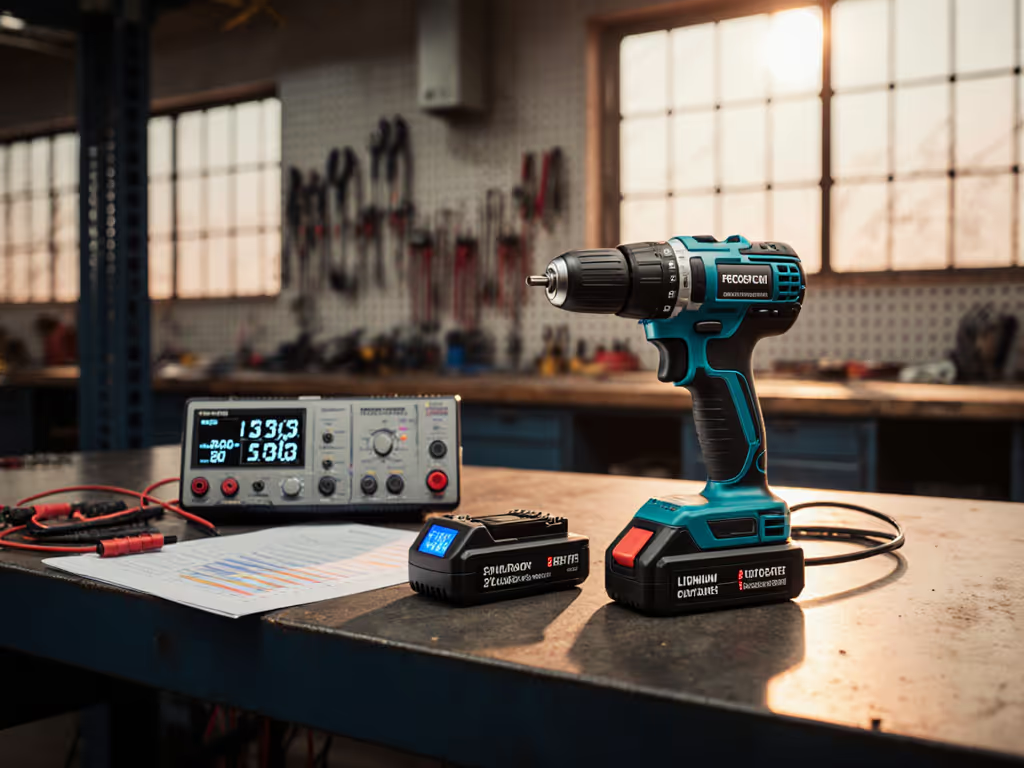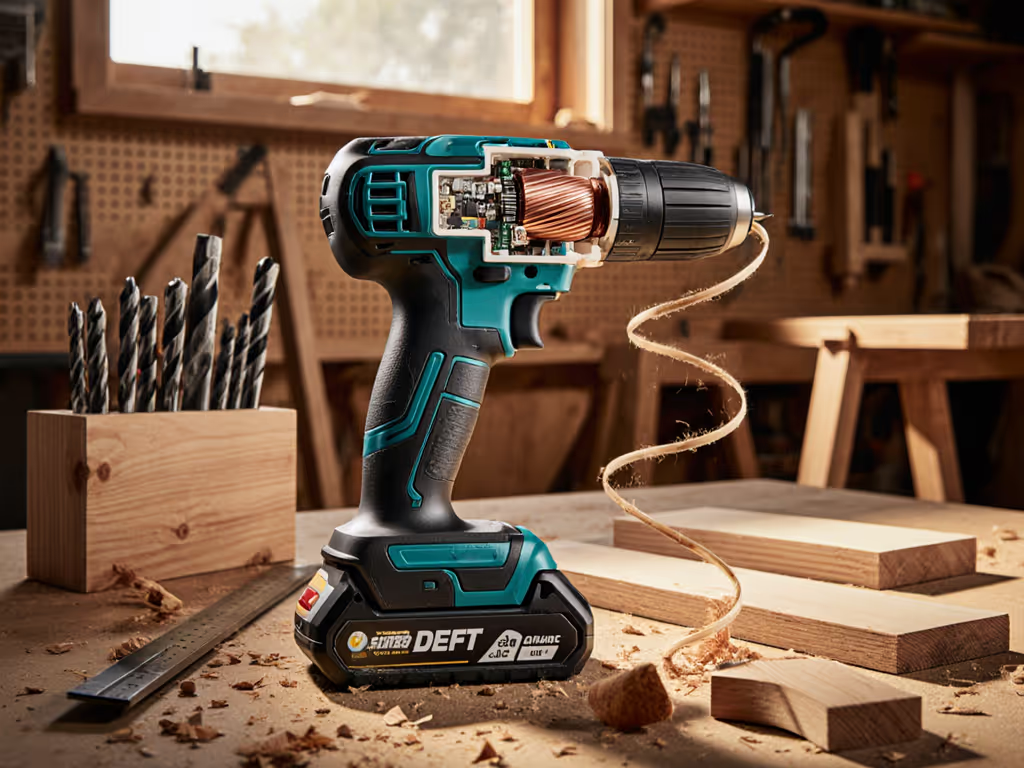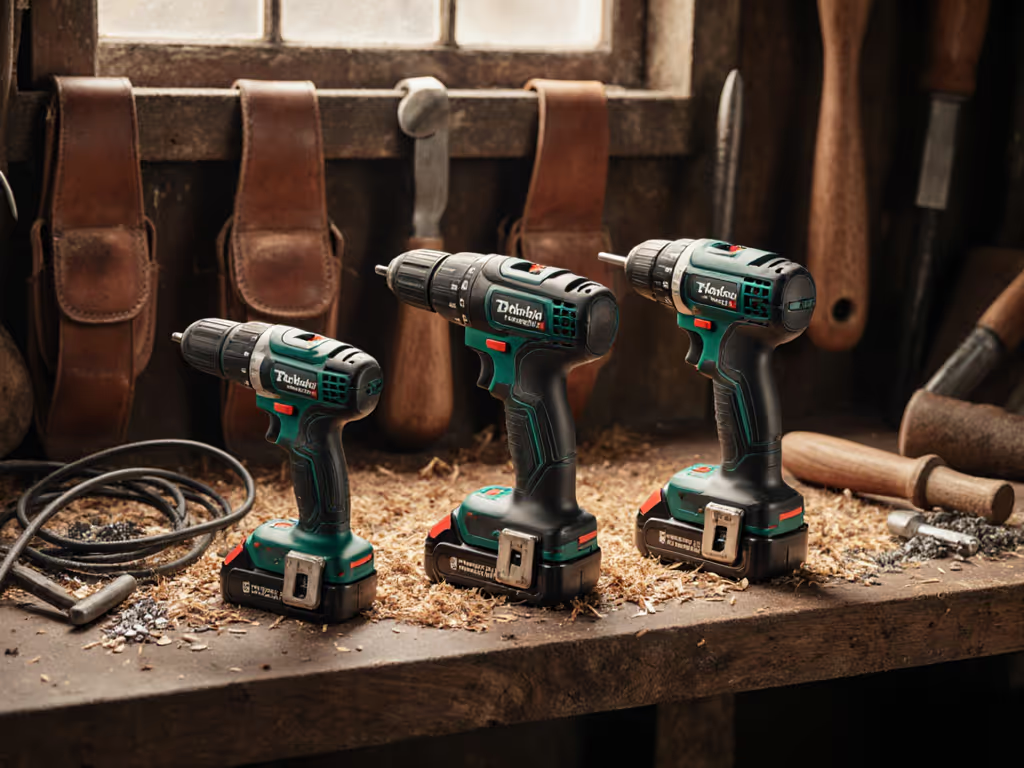
AI Power Drills 2025: Beat Fatigue, Predict Runtime

As serious DIYers and tradespeople navigate the flood of AI power drills 2025 announcements, separating genuine innovation from marketing fluff is critical. Forget raw torque numbers; smart drill AI features now target fatigue reduction and runtime predictability, two pain points that silently sabotage productivity. Fatigue is a hidden cost that erodes quality and speed long before you notice. Let's cut through the hype with field-tested insights for your next project.

Why "AI" Matters Beyond the Buzzword
The term "AI" gets thrown around freely, but in 2025's best drills, it translates to adaptive intelligence that serves your body and workflow. Unlike gimmicky "smart" features from past years, today's real-world AI focuses on people-first metrics like sustained accuracy over an 8-hour shift (not peak performance in a 30-second demo).
How AI Actually Predicts Runtime (Beyond Voltage Gauges)
Q: Can AI really forecast holes-per-charge accurately? Early runtime predictors relied on simplistic voltage curves. Modern drill usage analytics systems (like those in Milwaukee's M18 AI ecosystem) use multi-sensor fusion: battery temperature, real-time load, bit material, even ambient temperature. They analyze your historical usage patterns (e.g., "drilling 50x 3/8" holes in 2x pine") to project remaining capacity within 10% accuracy. This isn't guesswork; it's learned behavior. For crews, this means no more mid-shift battery panic. For realistic holes-per-charge benchmarks across common spring projects, see our holes-per-charge guide. Map your project's demand before the first hole, using the tool's own data history as your baseline.
Q: Do these systems work in extreme temperatures? Field-tested units adjust algorithms for cold (below 40°F) where lithium-ion performance drops. One HVAC contractor I worked with reduced runtime surprises by 70% after his crew started inputting job-site temps into the tool's companion app. Key takeaway: stress the setup by calibrating environmental factors; your AI's accuracy depends on it. If you work in heat waves or freezing garages, follow our battery temperature care guide for charging and storage protocols.
AI Torque Optimization: Safety and Fatigue Solved
Q: How does "AI torque optimization" prevent wrist strain? This is where AI shifts from convenience to safety-forward necessity. Systems like Milwaukee's contact-activation tech (seen in the M18 AI Triggerless platform) measure resistance 500x/sec. When drilling overhead into stud bays, the AI instantly reduces torque before the bit binds, preventing violent kickback that stresses your wrist and shoulder. I recall an apprentice whose wrist pain vanished after switching to a balanced AI drill with side-handle compatibility; his output rose 25% because he wasn't stopping to rub sore joints. Reach matters more than specs when your arm's trembling over your head.
Q: Isn't automatic torque control dangerous for beginners? Not when designed correctly. True smart tool safety features include gradual torque ramping (not sudden cuts). The AI learns your pressure cues (e.g., feathering pressure near drywall) and adjusts. Crucially, it never overrides user control in high-risk scenarios (like metal drilling). Always engage the side handle for overhead work, AI augments technique; it doesn't replace fundamentals. For foundational best practices, review our power drill safety guidelines.
Predictive Maintenance: Stop Guessing, Start Preventing
Q: How does predictive maintenance prevent downtime? Drill predictive maintenance isn't about "repair alerts"; it is proactive fatigue management. Sensors track vibration patterns that precede motor wear. One electrical contractor caught abnormal chuck wobble via his tool's app before it caused runout on conduit holes. More importantly, it logs your usage patterns: "Your drilling depth exceeds recommended duty cycle by 30% during cabinet installs." This is fatigue data you can't ignore. Keep uptime high with routine drill maintenance basics covering battery care and chuck service.
Q: Do I need to replace tools early to get these features? No. Many 2024-2025 models add AI via firmware updates (e.g., Milwaukee's ONE-KEY integration). If upgrading, prioritize tools where AI serves your workflow (not just collects data). Avoid systems requiring constant cloud sync; job sites lose signal.
Three Field-Tested Principles for Choosing Wisely
-
Demand Contextual Analytics
Ignore "1,000 holes per charge!" claims. Ask: "What material, bit size, and depth?" Real drill usage analytics provide job-specific forecasts. If a brand can't show sample data from your typical task (e.g., "200x #8 screws in MDF"), skip it. -
Weight ≠ Power - Balance = Endurance
A compact, balanced drill with AI torque control fatigues users less than a heavier "high-torque" model. Measure dynamic weight: how much does vibration increase when drilling hardwood? That's the fatigue accelerator. -
Verify Safety Integration
True smart tool safety features make unsafe actions harder (not just warn about them). Example: AI that requires side-handle attachment before enabling max torque for overhead work. Safety isn't a software toggle.
Fatigue is a hidden cost; balance beats raw weight every day.
Actionable Next Step: Map Your Next Project's Drill Demands
Don't wait for wrist pain or dead batteries to strike. Right now:
-
Track a single task for 30 minutes:
- Note repetitive motions causing strain (e.g., overhead drilling)
- Count holes/screws completed per battery charge
- Rate wrist/shoulder fatigue on a 1-5 scale
-
Input this data into any AI drill's companion app (even older models). Most calculate your custom runtime curves within 2 uses.
-
If upgrading, prioritize tools where AI minimizes your identified fatigue points (not just "future-proofing").
The apprentice's wrist healed not because we gave him more power, but because we eliminated wasted motion. Today's best AI power drills 2025 do the same: they're not smarter tools; they're smarter workflows. Stop paying the hidden cost of fatigue. Your next project's precision, and your body, will thank you.
Related Articles





History of Power Drills: How Innovations Fought Fatigue
Learn how breakthroughs - from pistol grips to lithium-ion and vibration damping - shifted drills from raw power to balanced ergonomics that fight fatigue. Use practical criteria and a quick self-test to choose and set up a drill that reduces strain while maintaining precision and productivity.
